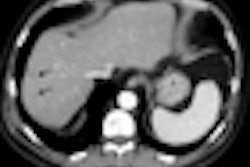In personal computers, quad-core microprocessors and graphics processors allow the user to view graphics with extreme detail. The gaming industry has embraced this technology, and an entire generation of teenagers has driven the development of advanced computer games. Now, the medical imaging industry has discovered that it can leverage the high-speed computation technology to advance medical imaging.
Today's physicians expect the best images available when developing their diagnoses. This demand has led to continued advancement of image quality and enhancement processes. Speed, image size, and resolution are each an important part of the puzzle.
Previously, each step of the image enhancement process was accomplished sequentially, due to hardware limitations. Thanks to hardware advancements, image enhancement can now be accomplished simultaneously with other core image processes. New processing platforms have extraordinary implications for advancing medical imaging technologies. Additionally, state-of-the-art processing capacity, together with advanced image enhancement algorithms, can be used to further improve image quality and processing speed.
The use of ultrafast processing also reduces the time needed to review images. For example, when reviewing 3D colonoscopy images, doctors and patients typically wait up to two or more minutes for an image to be processed before it appears on the viewing screen. As several sets of these images are typically used in one session, this requires significant time and decreases patient throughput. When several sets of these images require processing, valuable time for both doctors and patients is lost.
Using the computational power of a graphics processing unit (GPU), typical processing time is 30 seconds or faster. The GPU has built-in capabilities for ultrafast processing of images. These processes are normally used in computer games to calculate moving objects and their shadows and to create extremely realistic graphic images. Today, medical imaging experts use this functionality for enhancing medical images.
Graphics processing unit
The GPU -- the evolution of which can be attributed to the gaming industry -- supports image processing times up to 10 times faster than a standard central processing unit provides. Image enhancement, reconstructions, and rendering algorithms can be easily integrated into the GPU, which also has a very favorable price.
In some instances, such as fluoroscopy, medical procedures and diagnoses require that advanced image enhancement be achieved in real-time. Using a GPU, frame rates of up to 60 frames per second (1024k x 1024k images) can be achieved. The processing capacity of GPUs allows millions of operations to be performed per second, with millions of calculations undertaken on each pixel in an image. A 1024k x 1024k image contains around 1 million pixels and carries valuable diagnostic information. At 60 frames per second this translates to processing information available in 60 million pixels per second. This type of ultrafast processing can not be achieved with normal central processing units, where the processing speed may only reach 15 frames per second.
GPUs, however, bring a couple of disadvantages to the table. First, GPUs require a host PC. The GPU will not function autonomously and needs the central processing unit host for its performance. Second, this technology witnesses a wave of new products every six months. The medical imaging industry requires long-term availability of GPU boards, which the GPU manufacturers have difficulties in securing.
Cell processor
The Cell processor was developed through collaboration between Sony, Toshiba, and IBM, and serves as the heart of PlayStation 3, an advanced video game console. Several manufacturers of medical imaging equipment are turning to the Cell processor as the main processor in their imaging systems.
The Cell processor is extremely useful and its computational performance is tremendous. The Cell, however, offers low-level control of direct memory access and memory usage, requiring extra effort to find the most efficient solution to a particular problem. It is a state-of-the-art technology where the worldwide community of seeded development engineers is still small. The availability of development tools for the Cell processor is more limited than those for GPUs.
Field-programmable gate array
Not as well known as the GPU or the Cell, a field-programmable gate array (FPGA) is a semiconductor device with programmable logic circuits or blocks, which can be configured to perform complex functions. The computational performance of the FPGA technology is extreme and has been used within the telecom and satellite industries.
Typically a compact chip, an FPGA can be added to hardware and programmed to handle a specific function, such as image enhancement, decreasing the demands placed on the hardware and ideal for real-time applications. This customized solution offers a high performance/price factor solution. While FPGAs are suitable for volume production due to low circuit cost, the investment in development time is high.
Digital signal processor
A digital signal processor (DSP) is a specialized microprocessor, designed for real-time processing. The computational performance of DSP processors is also increasing. A high-end DSP circuit can have approximately the same computational performance as one core of a modern central processing unit, but the power consumption would be only a fraction. This enables fast image processing in handheld devices and other applications where low power consumption is critical.
The Cell, GPU, FPGA, and DSP platforms provide strong opportunities to improve medical image enhancement capabilities beyond current capabilities. As modern microprocessors continue to improve, it is important to find ways to implement this technology in areas other than entertainment. Every improvement made in medical imaging enables doctors to work more efficiently with their patients, ultimately leading to faster and more accurate diagnoses.
By Swante Welander, Peter Rönnquist, and Hans Norberg
AuntMinnie.com contributing writers
June 12, 2009
Swante Welander is responsible for new business development at ContextVision, a Swedish developer of image enhancement software for MRI, x-ray, ultrasound, CT, and interventional radiology applications.
Copyright © 2009 ContextVision



















